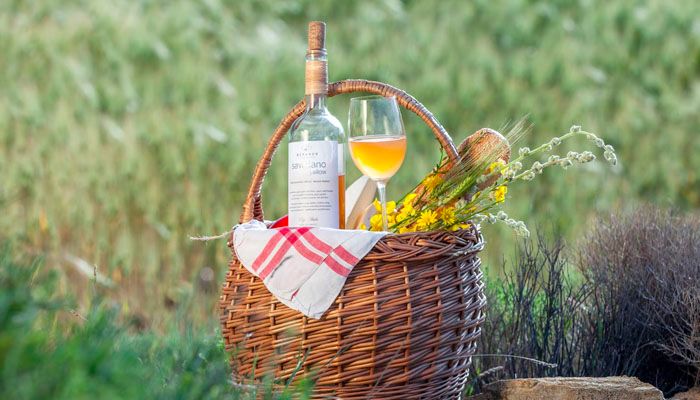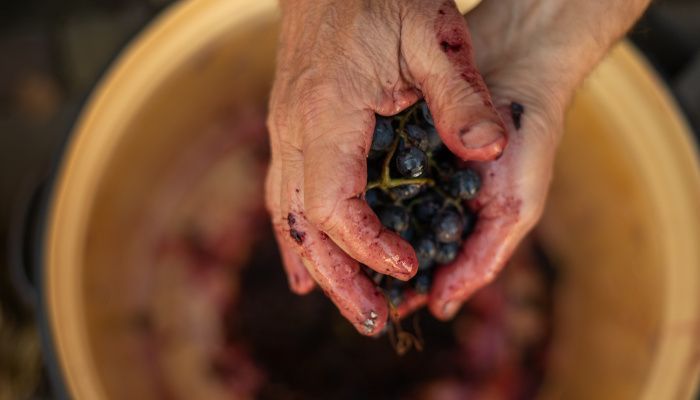What are Natural Wines?
How is a natural wine made? Are natural wines organic and biodynamic? What are the benefits of natural wines? Can they be laid down? In this article we reply to all these and some other questions.

'Mother Nature knows best' and 'Let nature take its course': these are the simple guiding principles of natural wines. They are wines that are made with no chemicals and using native yeasts giving wines a unique sense of place.
We often think that wine is a natural product and it’s a simple process to produce an inexpensive, tasty, fault-free wine that’s appealing to the consumer. However, there are many processes that the wine will go through to produce a consistent product, year on year.
Chemicals are used in the vineyard. At the harvesting stage, sulphites are added for their antioxidant and anti-microbial properties to keep the grapes healthy. Throughout the conventional winemaking process adjustments are made to help prevent spoilage and produce a consistent product. Natural wines avoid these interventions to produce a wine in its purest form, or so the theory goes!
The natural wine movement started in the mid-20th Century in Beaujolais when four pioneers used no chemicals in the vineyard, let grapes ripen for longer, used the absolute minimum of sulphites and added no sugar to increase sweetness and alcohol: the natural wine revolution had begun!
How is a natural wine made?
It starts in the vineyard where no chemical herbicides, fertilizers, pesticides and fungicides are used. The vineyard is sustainable and usually organic or biodynamic. Natural wine has no added sulphites, so careful attention to detail is vital to reduce the risk of unhealthy and damaged grapes.
Grapes are hand-harvested to minimize damage to the grapes. Diseased and unhealthy grapes are discarded, avoiding the need for sulphites. Once at the winery, which also needs to be meticulously kept, there are no adjustments made to the must, the grape pulp, prior to the winemaking process.

The wine is made according to the resulting type required, more on that later, where the fermented grape juice undergoes no interventions prior to bottling. A wine may still be aged in oak and, indeed, it must be if it is to be classified as a Bourgogne in Burgundy, for example.
It’s also worth noting that sulphites are a natural by-product of fermentation, so trace amounts will always be in the end product, obviously in much smaller quantities than in conventional winemaking. That’s why you will still see the warning, may contain sulphites, on wine labels.
In conventional winemaking, many interventions prior to bottling are concerned with producing a consistent product that 'Joe Public' is happy with. This means a clear wine with no sediment and it tastes the same as it did last year and is ready to drink.
Most wines go through a process to remove tartrates, these are crystals that form in the bottle and look a little like shards of glass. Although harmless, these are seen as unsightly to the masses and there are several processes available to remove them.
A wine’s consistency can be delivered through blending different batches; however, if a wine lacks acidity, sweetness or tannins, these can be added manually. To make the final wine clear, a fining agent is added to remove particles and it is also often filtered producing the 'fault-free' wine.
Just before bottling more sulphites are added, to reduce the risks of any oxidation, when a wine discolours and or spoils, so the wine is in tip-top shape at a wine shop for the wine lover.

For natural wine producers, these steps are against what they stand for as a winemaker as they want to produce a wine in its purest form with the purity of fruit and something that represents the true place where it was made.
This ethos means that there will be vintage variation; the wine may have a sediment and have a slight haze to it. However, this loFi approach will create additional intrinsic properties that more than compensate for minimal interventions.

What types of natural wine are there?
Generally, natural wines are for early drinking and as they often have a limited shelf life. Natural wines more than compensate for this through their offering of wonderful textures, flavours and aromatics.
There is a growing number of sparkling wines called pétillant naturel, Pet-Nat for short, which are made by bottling the wine before it has finished its initial fermentation. For this, try Tinc Set Ancestral; this definitely has sediment.
Orange wines are often natural wines, although you need to be careful as not all are. These are white wines that are made like red wine. These wines are fermented on their skins, rather than pressed first and the juice fermented. Again, try the delicious Calcarius Falanghina Nù Litr Orange.
Reds are fermented using whole bunches of grapes and produce some fruity and individual wines like the La Salada Maçaners or the Ampeleia Costa Toscana Rosso Unlitro.
White wine, like the red, is often fruitier than similarly produced whites and with some interesting characteristics so try the Vernatxa Blanc for its wild fennel and candied fruit.

What are the benefits of natural wine?
Natural wines have the utmost respect for nature, so the vineyards have balanced ecosystems with healthy soils, an abundance of natural predators and are environmentally friendly.
The wines have an individuality and change every year so to the purist, they are a great way to experience a sense of place.
Given consumers increasing health consciousness, people are beginning to be wary of their consumption habits. One anecdotal piece of evidence is that sulphites give people headaches. Although as yet unproven, it is something that people are increasingly concerned about.
Conclusion: the future of natural wine
Demand for natural wine is increasing and as it becomes more popular other consumers are more likely to want to try these types of wine. Given that more vineyards are going organic and biodynamic, it is becoming easier to produce natural wines if you have the right starting point.
Experiencing wine as nature intended must be a good thing! After all, mother nature knows best.
You May Be Also Interested in